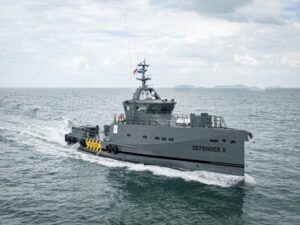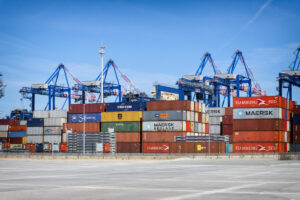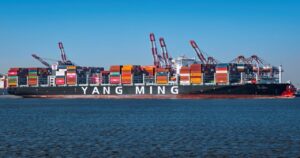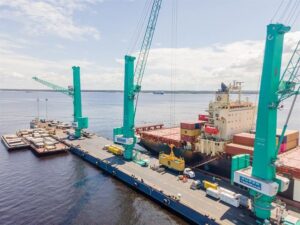Containers are the best method of ensuring safe and sound delivery when transporting cargo from one place to another, coming in various standard sizes so they can be moved by trains, ships and trucks.
The metal boxes come in lengths of 20 foot (6.09 m), 40 foot (12.18 m), 45 foot (13.7 m), 48 foot (14.6 m), and 53 foot (16.15 m), but are mostly 20-foot and 40-foot in size.
Twenty-foot Equivalent Unit (TEU) refers to a 20-foot container.
Forty-foot Equivalent Unit (FEU) refers to a 40-foot container.
Maersk Line, the largest company in container shipping, has uploaded the technical details of its entire container fleet to BoxTech’s database.
The world's biggest container ships are more than 1,300 feet long – that's 400 meters or the distance around an Olympic running track
Manufacturers of containers use aluminium and steel for construction as these metals are the most weather-hardy when ships move the boxes across the corrosive salty sea.
The various size and type of each container follows specifications and regulations formulated by the International Organization for Standardization (ISO).
The most important type of container is dry cargo, referred to as special containers.
Ship to shore container cranes (STS) are at the heart of port productivity, worldwide and are available in all sizes from panamax to megamax
These special containers include open side, open end, open top, half-height, flat rack, refrigerated, liquid bulk, and modular, built at same exterior lengths and widths as the standard dry cargo containers.
Transport companies will choose open top containers for easy loading of cargo such as odd-sized goods and machinery.
Vehicles, boats, machinery, and industrial equipment travel by flat racks
Open side containers move vegetables such as onions and potatoes, while tank containers transport liquids such as chemicals, wine, and vegetable oils.
Crew members, ship captains, coastguards, customs officers, dock supervisors, and warehouse managers use box numbers to find the owner of a container, who is using it to ship goods, and to track the container’s location.
Each container has its own unique unit number, often known as box number
Containers are standardised so they can stack efficiently and be transported one on top of the other.
Container-related technical papers:
-
Automatic Twistlock Systems
-
Empty Container Repositioning
-
Automated Inspection by AI
-
The VGM Ruling: A Review of the Implementation
Trains, ships, trucks and cranes at the ports can be specially fitted or built to a single size specification.
Container size standardization is carried out by the ISO, whose primary work is to set standard sizes for all containers.
The most crucial step in container shipping is the proper loading of containers in trucks, ships, and trains
Several government associations such as the World Shipping Council (WSC), together with the International Chamber of Shipping (ICS), published the Transport of Containers by Sea – Industry Guidance for Shippers and Container Stuffers.
It offers specific guidelines to shipping companies to transport containers in a safe and efficient way.
In terms of geography, North America dominates the global container shipping market.
This is due to improved transportation services in this region.
A refrigerated container, referred to as a 'reefer' container, is used for the transportation of temperature sensitive cargo.
The US is the largest market for container shipping, followed by Canada in North America.
In Europe, Germany, the UK, Spain, Italy, and France hold the major share of the container shipping market.
Asia should see high growth rates in the next five years as many companies are constructing manufacturing facilities in this region.
The rising number of manufacturing units would result in a significant rise in demand for containers.
Several government associations are boosting global container shipping market growth by providing specific guidelines to shipping companies
Improving transportation services are boosting the growth of the container shipping market in this region.
Japan, China, and India are expected to be the fastest-growing container shipping markets in Asia.
Increasing demand for transportation services is a key driver of the global container shipping market.
Rising number of factories and manufacturing units has fuelled growth of the global container shipping market.
Want to learn more? Read:Seven Facts You Should Know About Shipping
Information source: Persistence Market Research (PMR)














